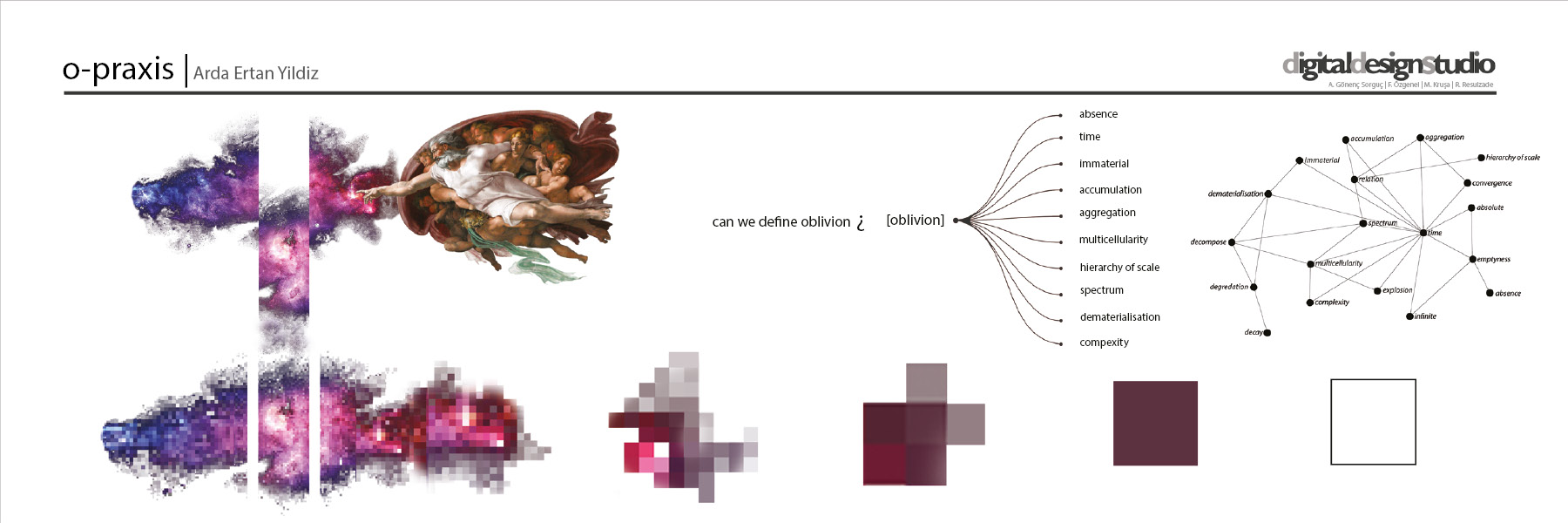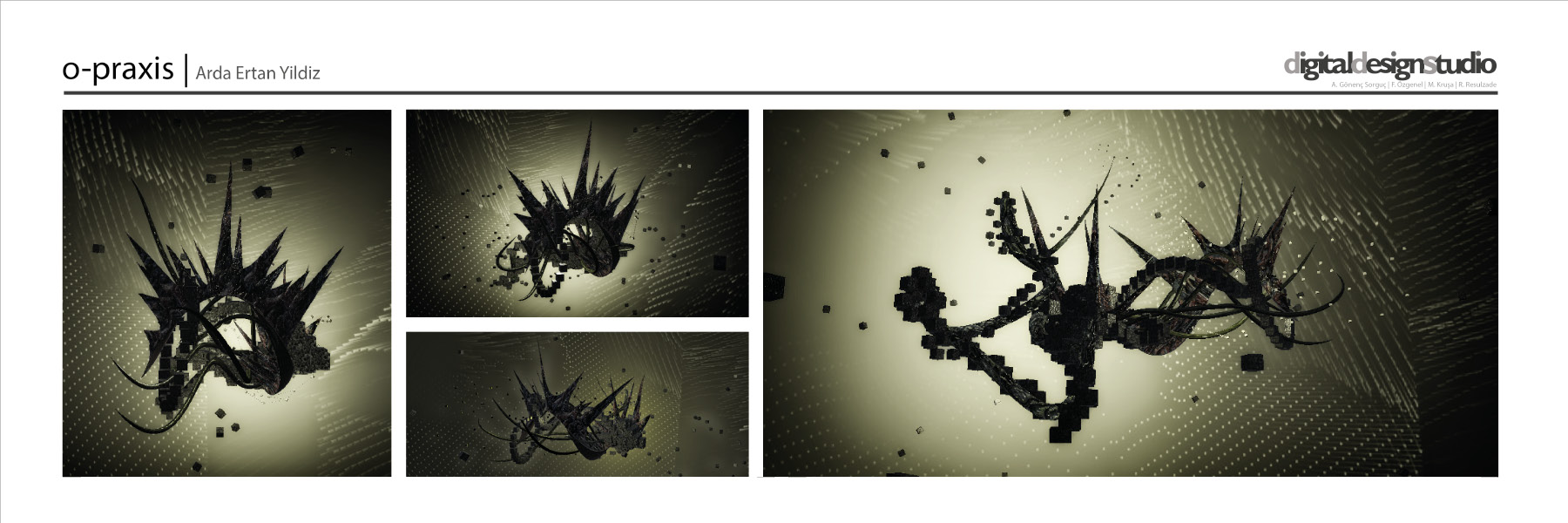Arda Ertan Yıldız
2017 Fall
ARCH470 Digital Design Studio
oblivion [uh-bliv-ee-uh n]: The state of being unaware or unconscious of what is happening around one.
Design questions the crucial question of defining oblivion by evaluating the genesis of entities. Just before the infinite blank space was filled with an unstable form of energy, whose nature is not yet known. At some instant, this energy was transformed into the fundamental particles from which emerges all the matter we observe today. So by crumbling and splitting the units, divisions created. As the process continues it started to deconstruct itself, at the same time scattered particles create links by getting closer to each other when they are dashing at the trajectory of the core. These links lead particles to overhaul the deconstructed parts which guide itself to a vicious cycle, comprising the previous-step in itself, forms a self-intersecting mutation matrix.
Within this infinite unconfined boundaries, design evolves through different stages through continuity and differentiation. At the initial stage [t0], compactness of components triggered by an explosion which expands itself that spreads the components. As this disjunction continues each component lose its identity, and this creates emptiness of oblivion. Nonetheless, these steps followed by recomposition stage which components transformed into fragments that can be accumulated or aggregated recurrently, in different scales. This aggregations and accumulations take place according to the bonds between particles that an aggregation is formed by pieces brought in a way that their unity covers the perception of their individual identity and creates an unorganized whole. In accumulation pieces arranged in an order that each particle sustains its existence with its antecedent.






